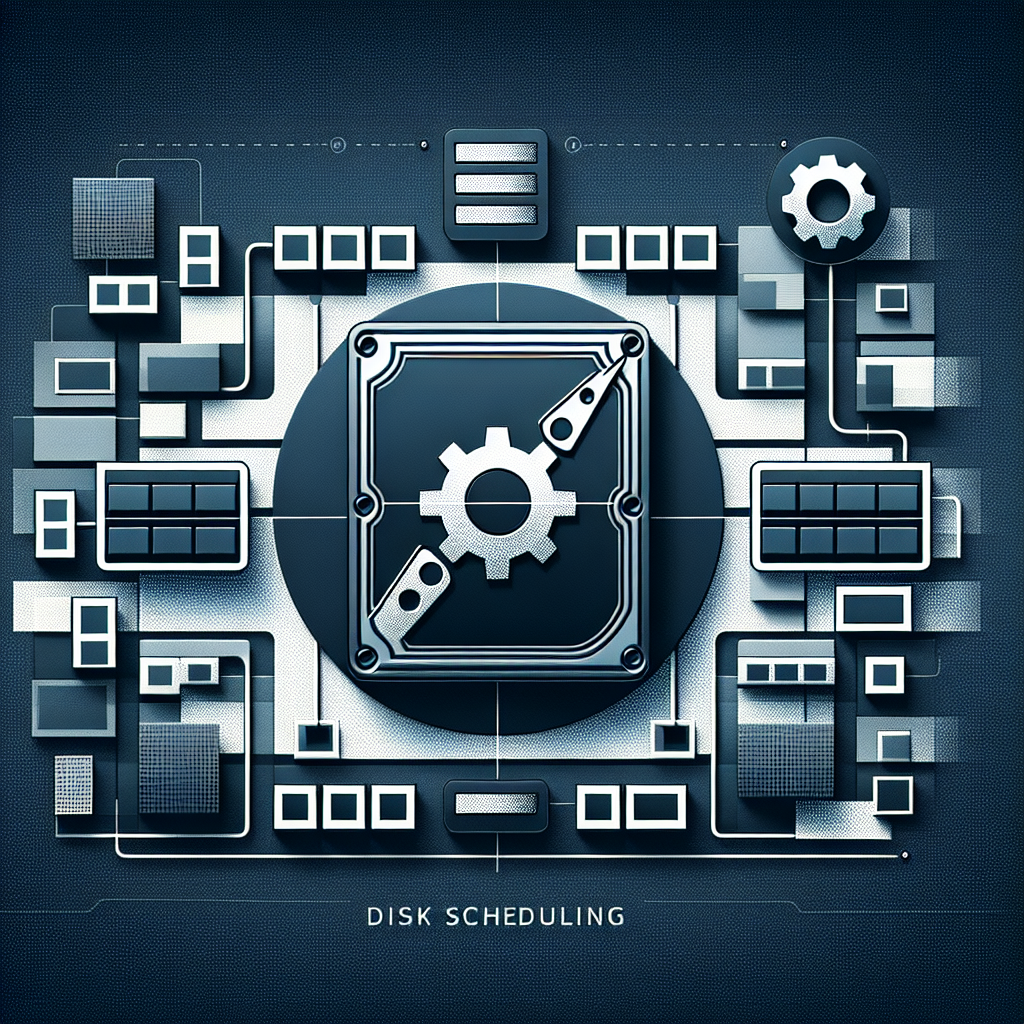Disk scheduling in an operating system (OS) is the process of deciding the order in which disk read and write requests are processed. This is important for ensuring that data is accessed efficiently and quickly. Disk scheduling helps in managing how data is stored and retrieved from the disk, making the computer work faster and smoother.
What is Disk Scheduling?
Disk scheduling is like organizing a queue for accessing data on a hard drive. When multiple requests to read or write data come in, the OS decides which request to handle first. This decision-making process helps to reduce the time taken to access data and improves the overall performance of the system.

Types of Disk Scheduling Algorithms
There are several methods for disk scheduling. Each method has its own way of deciding the order of requests.
-
First Come, First Served (FCFS)
FCFS processes disk requests in the order they arrive. It is simple to implement but not always the fastest. If a request for a distant part of the disk arrives first, other requests might have to wait a long time.
-
Shortest Seek Time First (SSTF)
SSTF selects the request closest to the current disk head position. This reduces the total distance the disk head moves, making it faster than FCFS. However, it can cause some requests to wait longer if they are far from the current position.
-
SCAN
The SCAN algorithm moves the disk head in one direction, fulfilling requests until it reaches the end, then reverses direction. This is like an elevator that goes up and down, picking up requests along the way. It ensures a more balanced wait time for requests.
-
C-SCAN
C-SCAN, or Circular SCAN, is similar to SCAN, but instead of reversing direction at the end, the disk head jumps back to the beginning and starts again. This method provides a more uniform wait time compared to SCAN.

LOOK and C-LOOK
LOOK and C-LOOK are similar to SCAN and C-SCAN, but the disk head only goes as far as the furthest request in each direction before reversing or jumping back. This reduces unnecessary movement of the disk head.
Why Disk Scheduling is Important
Disk scheduling improves the efficiency and speed of data access. It minimizes the time taken for the disk head to move between tracks, leading to faster read and write operations. This is crucial for applications that require quick access to large amounts of data.
Common Challenges
One of the main challenges in disk scheduling is managing the trade-off between fairness and performance. Some algorithms may favor certain requests over others, leading to longer wait times for some tasks. Balancing these factors is key to effective disk scheduling.
FAQs
What is the best disk scheduling algorithm?
The best algorithm depends on the specific needs of the system. SSTF is good for minimizing seek time, while C-SCAN provides more uniform wait times.
Why is disk scheduling necessary?
Disk scheduling is necessary to optimize the order of disk access requests, reducing the time it takes to read and write data, and improving system performance.
How does FCFS disk scheduling work?
FCFS processes requests in the order they arrive, like a queue. It is simple but can be inefficient if the requests are far apart on the disk.
Pros and Cons
Pros
- Improved Performance: Efficient algorithms reduce the time taken for disk operations.
- Resource Management: Better handling of multiple requests ensures smoother system operations.
- Balanced Load: Some algorithms like C-SCAN ensure a fair distribution of wait times.
Cons
- Complexity: More advanced algorithms can be harder to implement.
- Fairness Issues: Some methods may cause longer wait times for certain requests.
- Overhead: Disk scheduling requires additional processing, which can add a small amount of overhead to system operations.
Conclusion
Disk scheduling is an essential part of an operating system’s function, ensuring that data is accessed quickly and efficiently. Understanding the different algorithms and their advantages helps in choosing the right method for a given situation, leading to better overall system performance.









